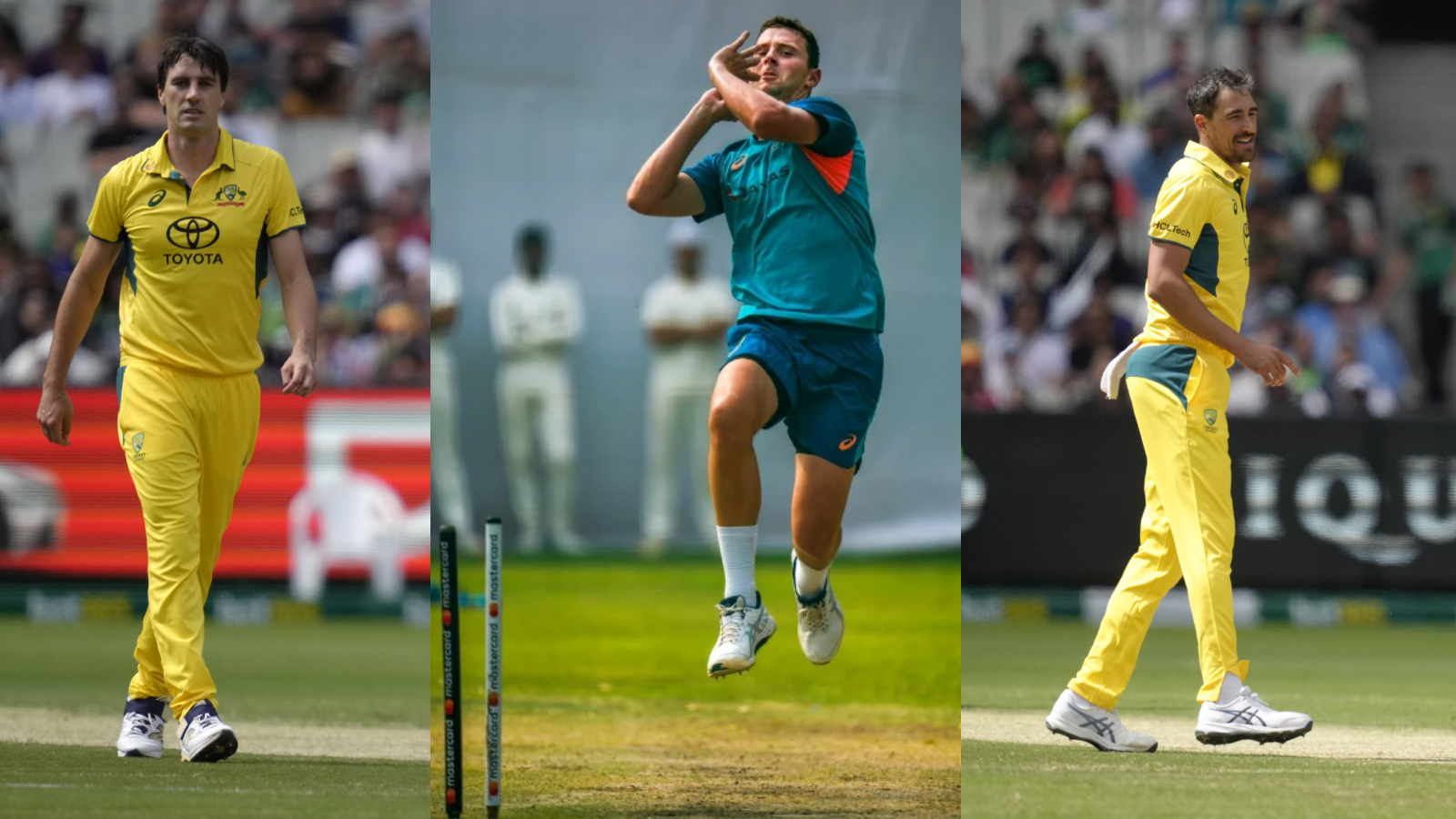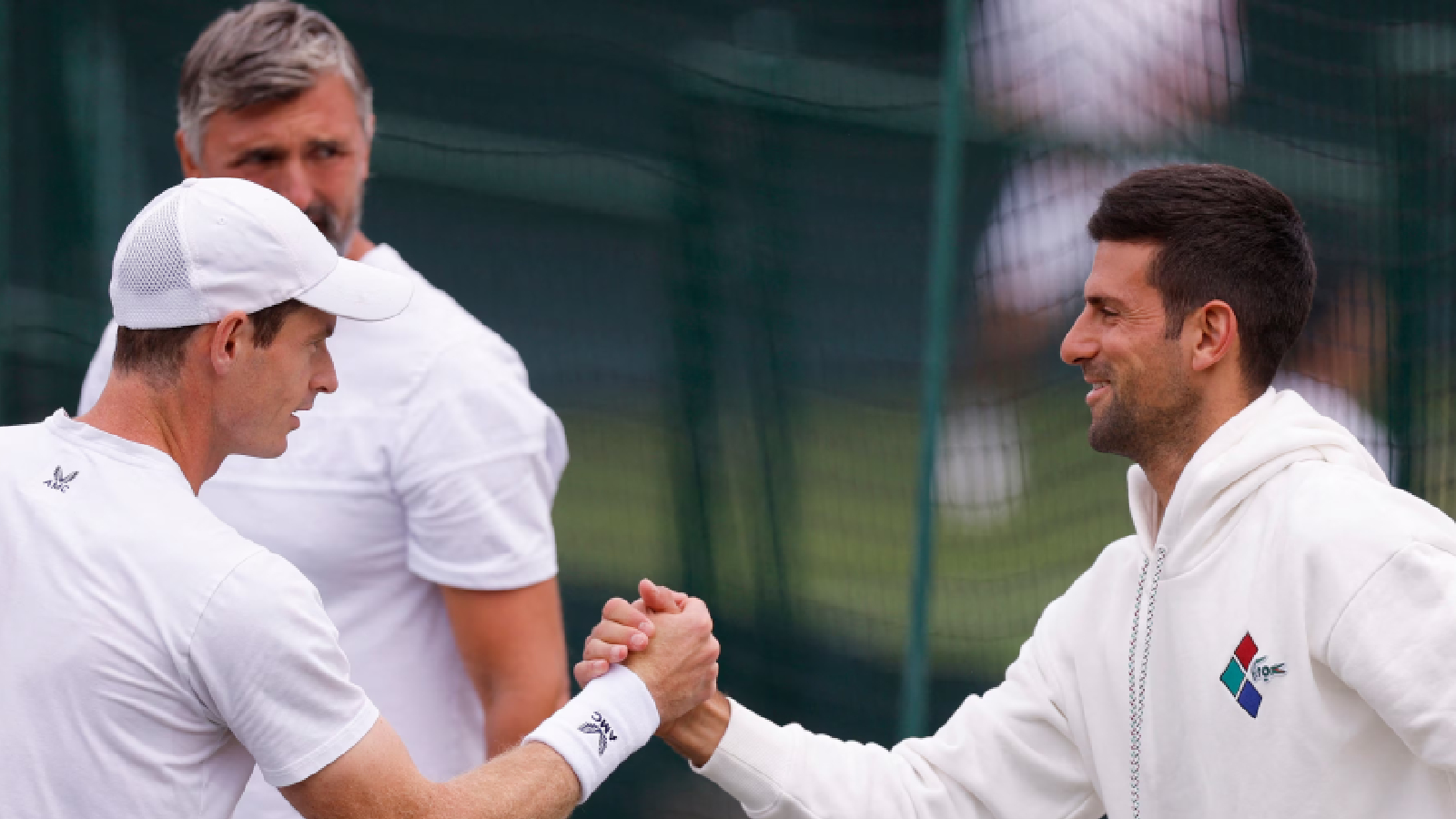First came the teenager from Westmead, Pat Cummins, rapid and fragile. A fortnight later arrived the shy left-armer from Baulkham Hills, Mitchell Starc, fiery and magical. Three years later emerged the boy from the outbacks Tamworth, Josh Hazlewood, serene and steady. It was not until 2017 November that the three fast bowlers from New South Wales shared a new-ball for the first time in a first-class game — blame it on an absurd sequence of injuries.
But seven years of several feats and triumphs across formats, they form the third most successful pace-bowling trifecta in the history of Tests, the sturdiest barrier in India’s Border-Gavaskar Trophy defence.
In the 62 times they have shared the spoils, they have collected 396 wickets at an average of 25.33 and a scalp every 49.5 balls. Only two bunches have a better haul; Tim Southee, Trent Boult and Neil Wagner (535) and Curtly Ambrose, Courtney Walsh and Ian Bishop (412); only the South African threesome of Dale Steyn, Morne Morkel and Vernon Philander has a better strike rate (48.87). Their celebrated predecessor Jason Gillespie, himself part of an all-time great unit that comprised Glenn McGrath and Brett Lee, considers them as the best pace-bowling trio his country had ever produced.
“When they first started playing together I said we’ll be talking about these guys as the possibly greatest trio of quicks who have played together for Australia. That’s obviously coming to fruition. In terms of variety, they are at the top of the tree,” he said.
Theirs is a fascinating alignment of individual skills, collectivism and brotherhood. All are capable of turning on the star show, all could don the supporting role too. They compete, yet there is no hubris; each is happy for each other’s success. In his column for Player’s Voice, Cummins detailed the essence of their camaraderie: “There are no egos whatsoever. It’s a special group. It feels like we grow an extra leg when we play together.”
But the primary reason they hit off is because they are three supremely skilled and multifaceted bowlers.
Starc: Wickets in heaps
Starc, in his 13th year in international cricket, has lost some of his slippery pace (nudging the early 140 kph than late). But he had become adept at interchanging his lengths, purchasing seam movement with the older ball and better discipline than ever before. Whereas he has seldom reproduced his white-ball mystique with the red-nut, he still produces scything, tone-setting opening spells. They call him the Mop, because he could pick up wickets in heaps.
India’s batsmen are well-acquainted with his curling threats with the new ball. The in-swinger to the right-hander, the late-tailing toe-crusher from round the stumps to the left-hander. He threatens the edges of both right and left-handed batsmen. Ben Stokes (9), Dimuth Karunaratne (8), Alastair Cook (6) and Dean Elgar (5) have all been the casualties of his late-swinging howitzers. His threat magnifies with the pink ball (65 wickets at 18.03). He compensates his waywardness — a consequence of full balls in search of swing — with his wicket-taking knack (strike rate of 48). “And usually with his first spell, which makes our job a lot easier,” Cummins said.
Hazlewood: Precision, pace, movement
He accentuates the mischief of his new-ball partner Hazlewood. From repelling late deviations in the air and off the surface from the left-armed angle, the batsman is forced to adjust to the extra height of Hazlewood’s release points. It means whatever his length be — he expertly varies lengths — he creates an extra lift. It’s common, thus, to see the ball cannon onto the splice or shoulder of the bat, always hitting the bat harder.
He marries the natural gift of height with precision, wisdom, pace and movement. He is quicker than Glenn McGrath, a bowler he is often likened to, yet as relentless. He can swing the ball like James Anderson, seam it like Kagiso Rabada and probe as hostilely as Jasprit Bumrah.
Individually, he might not be as proficient as them, but he has something of everything that makes him a daunting, all-condition wrecker. He is the set-up master. Yashasvi Jaiswal would be wiser if he had watched how he laid the snare for Rachin Ravindra in Christchurch in his last Test. The first eight balls landed on good length on the fourth stump, shaping into him from around the stumps. He blocked all on the front foot. The eight was wider, which he played and missed. The 10th landed on the exact spot as the first eight had, bent away a fraction with the edge of his bat.
Cummins: Ability to find the edge
By the time, the first spell is done away with, bounds in Cummins. He is the poster boy of the attack, with a face for the billboards and postcards. He is arguably the greatest of them all too, John Lennon among them. Greatest not purely because of his variations, but because he could switch from mid-130 kph workhorse to 145 kph strike bowler in the space of a ball, has the virtue of taking wickets in moments that shape the game, and that capacity to find great edges. Rohit Sharma—four times in 10 innings; Virat Kohli 5 in 12, Joe Root 11 in 31, Hashim Amla 4 in 8, Cheteshwar Pujara 8 in 19. He conjures magic balls from dead tracks — which could be the case when the Kookaburra loses its shine and the Tasman sun begins to bake the arena. He can tie an end up and yet still be attacking in the process.
There is the assurance that even if one is enduring a tough time, the other could step up. Cummins vouches: “Even if I’m bowling terribly, I know that if I can at least tie up an end one of the other boys will help me out and take wickets. And vice versa if I’m having a good day. It’s continual pressure. We pick each other up. It’s a group effort and we celebrate each other’s successes every bit as enthusiastically as our own.”
Leadership chores have not burdened Cummins. As captain, his average has slightly diminished (from 22.53 to a still elite-level 24), but his strike rate has improved (46.8 to 46.4). He finds the perfect balance in everything he does — be it setting fields, juggling his own workload or shuffling his own packs and devising schemes.
All three are in their 30s — Cummins the youngest at 31, Hazlewood and Starc both 34. There couldn’t be miles in their legs to last another BGT grind. It’s the only piece of honour they had not won together — in a cabinet of both white-ball formats World Cups, the Ashes urn and numerous other series wins — in their shared timeline.
I’m Manas Ranjan Sahoo: Founder of “Webtirety Software”. I’m a Full-time Software Professional and an aspiring entrepreneur, dedicated to growing this platform as large as possible. I love to Write Blogs on Software, Mobile applications, Web Technology, eCommerce, SEO, and about My experience with Life.






